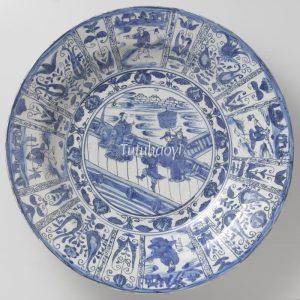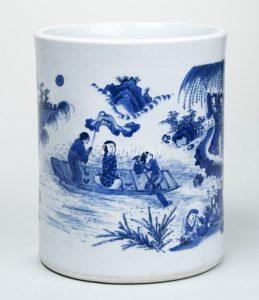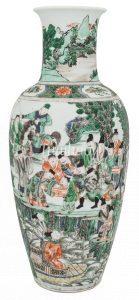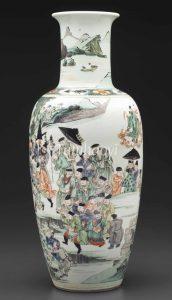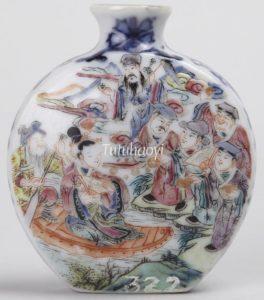Cai Xiang’s building of the Luoyang Bridge
蔡襄造桥
© Tutuhaoyi.com owns the copyright of the description content for the images attached. Quoting all or part of the description content on this page is permitted ONLY IF ‘Tutuhaoyi.com’ is clearly acknowledged anywhere your quote is produced unless stated otherwise. (本页描述内容版权归Tutuhaoyi.com所有,转发或引用需注明 “Tutuhaoyi.com”, 侵权必究, 已注开源信息的条目除外。)
The story of Cai Xiang’s building of the Luoyang Bridge comes from a popular play in the Ming dynasty. It blends history with legend. In the Northern Song, Cai Xiang—renowned calligrapher and prefect of Quanzhou—undertook the building of the Luoyang Bridge. The project took seven years to complete and has stood for nearly a millennium, linking the river’s two shores.
Legend says that before Cai was born, his mother once faced a storm at the ferry. The ferryman had dreamt that only a Cai Zhuangyuan—a top scholar bearing the surname Cai—could avert disaster. As the boat nearly capsized, a heavenly voice proclaimed: ‘A Cai Zhuangyuan is on board—none may harm him.’ The storm ceased, and his mother vowed that her son, if successful, would build a bridge to save others.
Years later, Cai Xiang achieved the highest degree and returned as prefect, determined to fulfil his mother’s vow. Funds were scarce until Guanyin Bodhisattva descended in disguise as a maiden in a lotus boat, inviting the wealthy to cast gold and silver at her in hopes of winning her hand. The boat soon brimmed with treasure. Yet Lv Dongbin, one of the Eight Immortals, mischievously aided a poor youth, Weituo: under his spell a copper coin struck the hem of Guanyin’s robe. Caught off guard by the immortal’s trick, she transformed Weituo into a statue at Mount Putuo, opposite her own image. The wealth she gathered, however, allowed Cai Xiang to complete the great bridge—remembered ever since as both a feat of devotion and a tale of wonder.
image identification and story scene description by Dr Yibin Ni
Other ancient figures and stories:
Ji Zha Hanging the Sword 季札挂剑 (延陵挂剑)
The ‘Righteous Aunt’ of Lu 鲁义姑舍子救侄
Fig 1: porcelain plate with underglaze blue decoration, late Ming dynasty (1572–1645) , courtesy of the Rijksmuseum, Amsterdam
Fig 2: porcelain brush pot with underglaze blue decoration, Chongzhen period (1628–44), Ming dynasty, courtesy of Princessehof Ceramics Museum, Leeuwarden, The Netherlands
Fig 3-4: famille verte porcelain vase, Kangxi period (1662–1722), Qing dynasty, courtesy of the Jie Rui Tang Collection
Fig 5: porcelain snuff bottle with underglaze blue and overglaze famille rose decoration, c. 1770–1820, Qing dynasty, courtesy of Princeton University Art Museum, Object Number: y1936-557
